Some parts and tools have started arriving for my CNC Router project that I’m working on. I picked up a drill press, a carbide saw blade for cutting aluminum and also the NSK Linear Guides came in today.
I felt the need to purchase some basic tools as I don’t have a great existing workshop. I know some people who build their DIY CNC machines have quite a few shop resources such as high end drill presses, mills, welders and other tools that they have access to or have an existing workshop which makes it easier for them to build a CNC machine. There are a couple of threads over on CNCZone where you can see people machining these beautiful components for their new CNC machine and that’s great, but there are also a lot of folks who have made great machines with limited resources.
I needed a drill press for drilling accurate holes in the extruded aluminum so over the weekend we picked up a Ridgid DP1550 Drill Press. A 15″ depth stationary drill press. I thought it weighed about 200 pounds, but after checking the specs it’s 153. Once the workshop is cleaned out and reorganized I will be bolting it to the floor in it’s final position.
You can click on the pictures below to enlarge them.
This thing is a behemoth compared to some of the other table-top units I was looking at. My bench top in the workroom is a 2″ think base and I didn’t want to waste space on it with drill presses, etc. so I went with this freestanding unit. It’s in pretty good condition as expected with a new product. I was pleased with the various belt configurations for speed adjustment, the belt tensioner configuration and it has a lamp socket that will take a standard 60 watt standard light bulb (not included). I’d advise against using a fluorescent light bulb on a moving equipment as the stroboscopic effect may make it look like it’s stationary when it’s actually moving.
The wrench included for some of the parts is garbage and the forked end spread open when attach the first feed handle. Fortunately you can use a normal wrench to do that as well. There is a handy tool tray included with the press. In the baove photo you can see the silver lever to the right of the top feed handle and a little gray knob behind it. To tension the belts you loosen the grey knob and adjust the silver handle to get the requested 1/4″ slack in the belts then re-tighten the gray knob. There is also a gray knob on the opposite side of the power unit which needs to be loosened and tightened as well.
In the above photo is the work surface of the drill press. It’s machined flat and you can see a lot of machining swirls in the surface. I wiped the oil off the top of the plate but it seemed to actually be a bit rusted on the surface which didn’t make me happy. I sparingly used break parts cleaner on the surface and the surface cleaned right up as you can see below. Now that it’s cleaned to the raw metal surface it needs to be protected with some wax paste to keep it from rusting.
I also tested the run-out on the drill press at the shaft, the edge of the chuck and on a drill bit with a Grizzly dial indicator. On the shaft the run-out was about .007″ but the end of the shaft is ground and the chuck press fits onto the shaft. The run-out on the chuck was about .0035″ and the run on a new drill bit in the chuck jaws, measured at the top of the drill bit (closest the chuck) was also about .0035 inch.
And finally for the drill press I picked up a drill press vice. I didn’t really feel like trying to hang onto a piece of aluminum as I was drilling into it, and for just all around safety and accuracy it’s a good idea. I’m surprised drill presses don’t come with them included, but maybe higher end presses do include them.
On the same shopping trip I also picked up a saw blade for cutting the Bosch-Rexroth aluminum extrusions to length. The blade is a Freud D1084L 10-Inch Diameter 84 tooth carbide which is rated for aluminum. I’m looking forward to trying this out on some scrap Aluminum first to see how it performs.
And finally for this post the NSK Linear Guides / Linear Rails arrived today from automation-overstock.com via UPS in good shape. The rails are new in their boxes with the included inspection sheet. They’re wrapped in the original factory plastic bags and covered in lithium soap grease to protect them from corrosion or other mess while in storage. I opened up one of the rails and cleaned it up just a little bit to show it off. The inspection sheet shows the tested tolerance of each rail (one rail is the reference side the other is the adjustment side. I’m glad that I bought them in pairs). The tolerances are measured in micrometers (.001mm). Here are a few examples, the measurements are measured at the carriage riding on the rail.
Running Parallelism Face A (bottom of rail) to Face C (Top of Ball Slide/Carriage) over 1060mm rail length (max tolerance .006 over 1060mm):
Rail 1 — Carriage A: .0015 Carriage B: .0015
Rail 2 — Carriage A: .0009 Carriage B: .0009
Running Parallelism Face B (Side of Rail) to Face D (Side of Ball Slide/Carriage) over 1060mm rail length (max tolerance .006 over 1060mm):
Rail 1 — Carriage A: .002 Carriage B: .002
Rail 2 — Carriage A: .0009 Carriage B: .0009
Here are some of the photos I took of the new rails.
More parts are arriving later this week so I’ll make sure to post some photos and information on those as well. This is the first surge of parts so I’m sure things will slow down a little bit after this week. I’m still working on my ball screw dilemma and may end up going with ACME screws to start. Ollie knows of a method of molding ACME nuts nuts with very low backlash using some various chemical concoctions so I’m going to be talking with him about that at the RC club meeting this week.
Previous: CNC Router System Components
Next: Assembling the Frame
Search CNC Posts


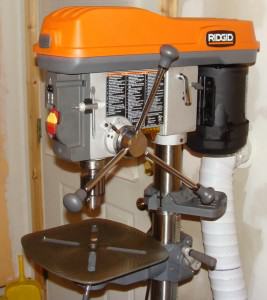
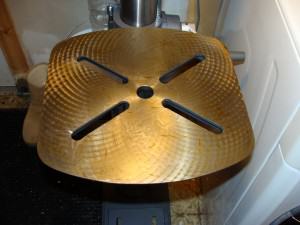
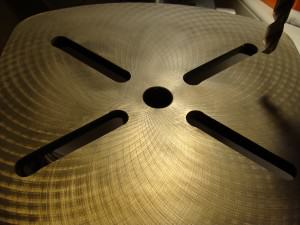
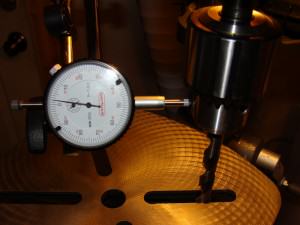
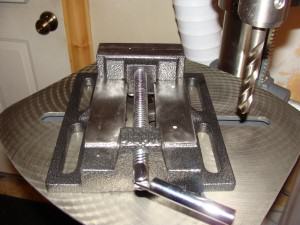
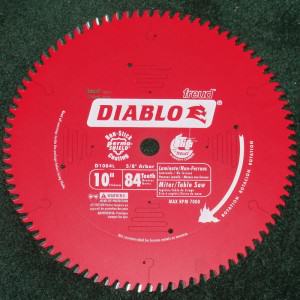
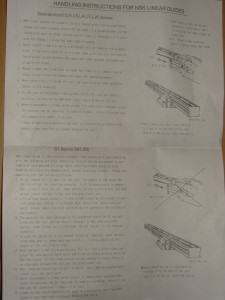


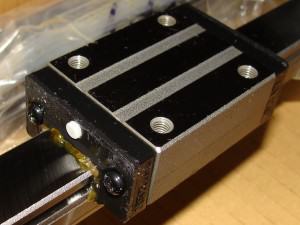
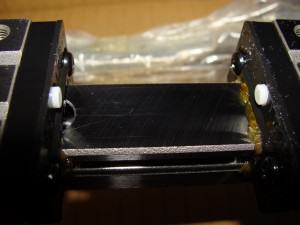
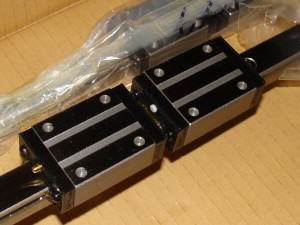
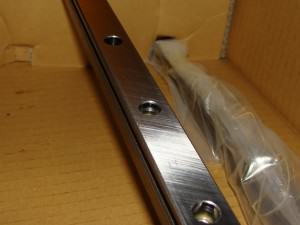
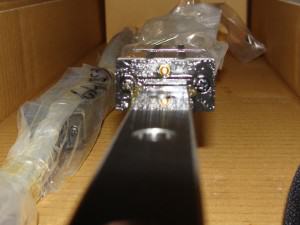
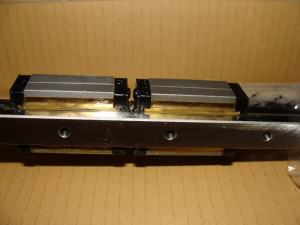
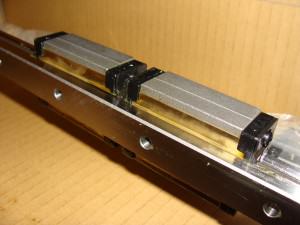
Leave a reply to Part 3: First DIY CNC Project – CNC Router Parts and Tools